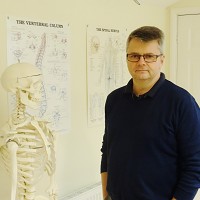
Whiplash
Whiplash is a term that describes any traumatic spinal injury, although typically it affects the neck or low back. Most commonly it is associated with a car accident, however, it can be caused by falling awkwardly or hitting your head, for example. I recently saw someone who was getting neck pain and stiffness caused by a roller coaster coming to an abrupt stop.
The mechanism by which pain is caused can vary from an impact, such as tripping and hitting your head on the pavement, to pain caused by the sudden, sharp movement of the head when involved in a car accident, for example. What is common to any whiplash injury is that the resulting pain and inflammation can affect a wide variety of structures which gives rise to varying and wide-ranging symptoms. A whiplash injury can lead to neck, back and shoulder pain, arm/leg pain, chest pain, pins & needles and headaches.
In severe cases the injury can lead to a fracture of the spine or a spinal cord injury and these cases require specialist, hospital management. However, the vast majority of whiplash injuries are less severe and the symptoms are related to strain and inflammation of joints, muscles, ligaments and other soft tissues. That is not to say that the symptoms are not debilitating and can be extremely painful. It is important to get early help after a whiplash injury so that you can be given good, self-help advice ranging from exercises to restore normal range of movement to good postural and spinal management and the application of heat or ice. A course of Physiotherapy treatment is often beneficial as gentle hands-on treatment can help to increase joint and muscle flexibility as well as promoting the tissue repair process.
Research suggests that, when treating a whiplash injury, the aim is to promote movement through gentle exercise and normal function while avoiding very painful activities. The days of immobilising someone’s neck with a soft collar for 4-6 weeks are, fortunately, long gone. However, consideration has to be given to moderating work and lifestyle in the short term to allow the Healing and repair process to take effect. Even with the correct treatment and management recovery from a whiplash can go on for many months, albeit with a gradually improving situation, however, the majority of people do fully recover and return to normal activities.




